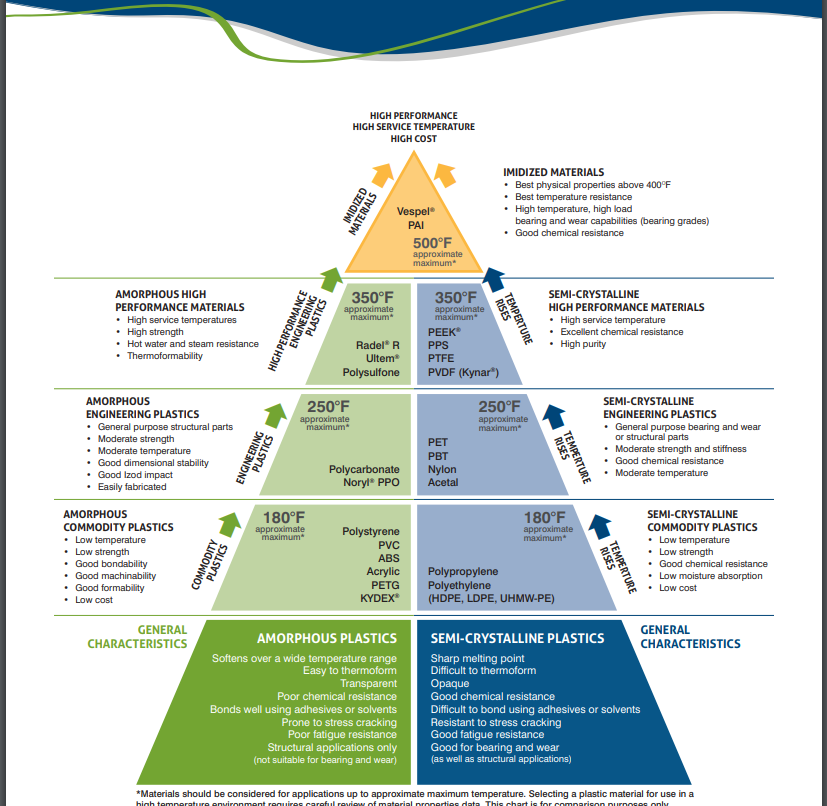
Thermoplastic elastomers ( Thoda Gyan)
What is a Polymer?
It is necessary to explain some basic points before providing detailed information about Thermoplastic Elastomers (TPE).( From Elastron)
What is a Polymer?
It is necessary to explain some basic points before providing detailed information about Thermoplastic Elastomers (TPE).( From Elastron)
A polymer is a large molecule made of repeating small and simple chemical units. They are classified as follows according to their formation ability. TPEs (thermoplastic elastomers) belong to the elastomer class. 

There was a clear distinction between rubber and plastics before TPEs were introduced. Rubbers are soft, flexible, and elastic, whereas plastics are known to be hard and rigid.
TPE materials can be processed and recycled like thermoplastics but they have similar properties and performance to thermoset rubber materials
Classification of TPEs
TPEs are classified into two groups as block copolymers or thermoplastic/elastomer blends . Block copolymers are structures containing 2 different monomers in a single polymer chain. Separately,
TPEs are classified into two groups as block copolymers or thermoplastic/elastomer blends . Block copolymers are structures containing 2 different monomers in a single polymer chain. Separately,
thermoplastic/elastomer blends are formed by mixing elastomer and thermoplastic structure in a molten stat 

All TPE varieties contain two or more polymeric phases, one hard and the other soft. When solidified (below the melting temperature), the hard regions of the different chains come together to form hard thermoplastic parts, while the soft regions form elastomeric parts.
When a block copolymer is heated above its melting temperature, the bonds between the chains of the hard regions are broken, becoming a molten material suitable for molding, extrusion, or other processing methods .
When the molten TPE is cooled down below its melting temperature, the hard regions come together, solidify again and take their final molded form.
Hard segments provide plastic properties
Mechanical properties-Tensile strength - Tearresistance)
Thermal resistance
Easy to process
Hard segments provide plastic properties
Mechanical properties-Tensile strength - Tearresistance)
Thermal resistance
Easy to process
Soft segments provide elastic properties
Permanent deformation
Elasticity
Low heat performance
Permanent deformation
Elasticity
Low heat performance
Advantages of TPEs
100% recyclable – no scrap
Easier processing
No static crosslinking process
Shorter cycle time, less energy consumption
Good coloring
Processes such as blow molding, thermoforming, heat welding, film blowing can be applied.
Low density
Can be colored
100% recyclable – no scrap
Easier processing
No static crosslinking process
Shorter cycle time, less energy consumption
Good coloring
Processes such as blow molding, thermoforming, heat welding, film blowing can be applied.
Low density
Can be colored
A TPE must fulfill the following three essential characteristics:
The ability to be stretched to moderate elongations and, upon the removal of stress, return to something close to its original shape
Processable as a melt at elevated temperature
Absence of significant creep
The ability to be stretched to moderate elongations and, upon the removal of stress, return to something close to its original shape
Processable as a melt at elevated temperature
Absence of significant creep
TPE is considered as an efficient and cost-effective alternative for latex, silicone rubber, and polyvinyl chloride (PVC) compounds. Its rubber like properties have enabled TPE to replace rubber significantly in several applications.
Today, they are used in many applications, like adhesives, footwear, medical devices, automobile parts, household goods, etc., where they offer elasticity benefits over a wide temperature range.
• • •
Missing some Tweet in this thread? You can try to
force a refresh


















